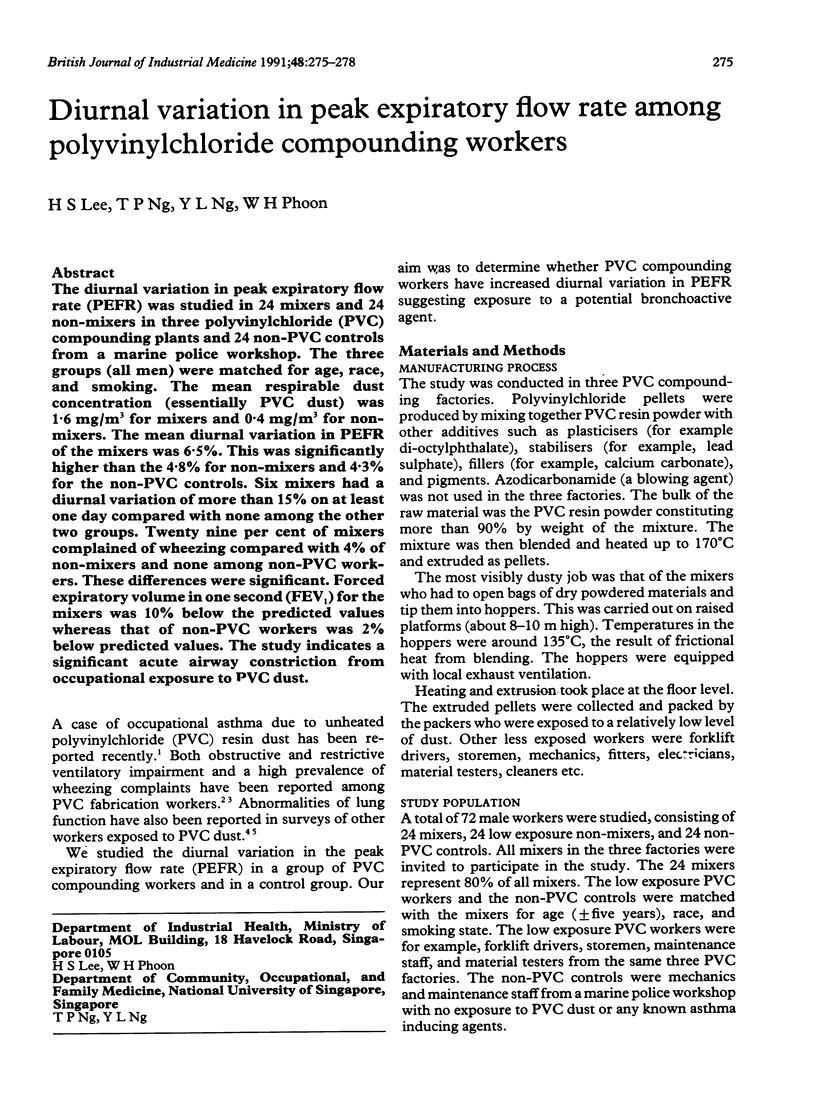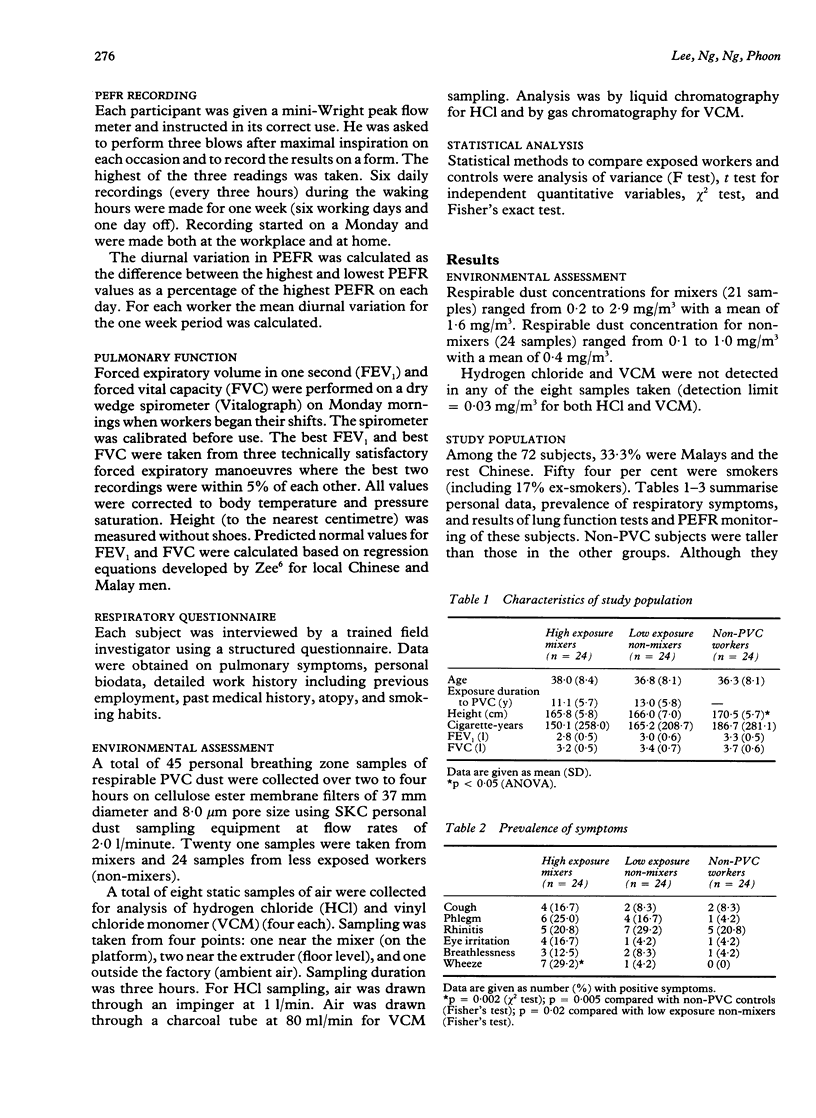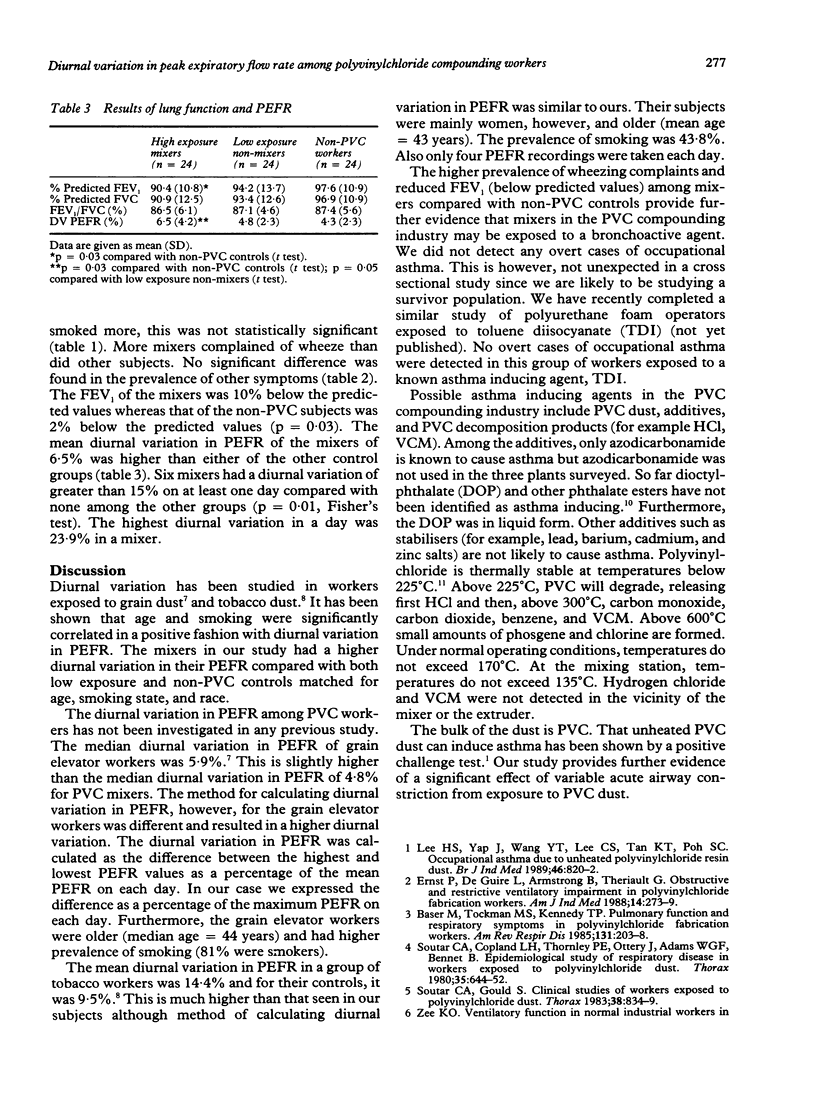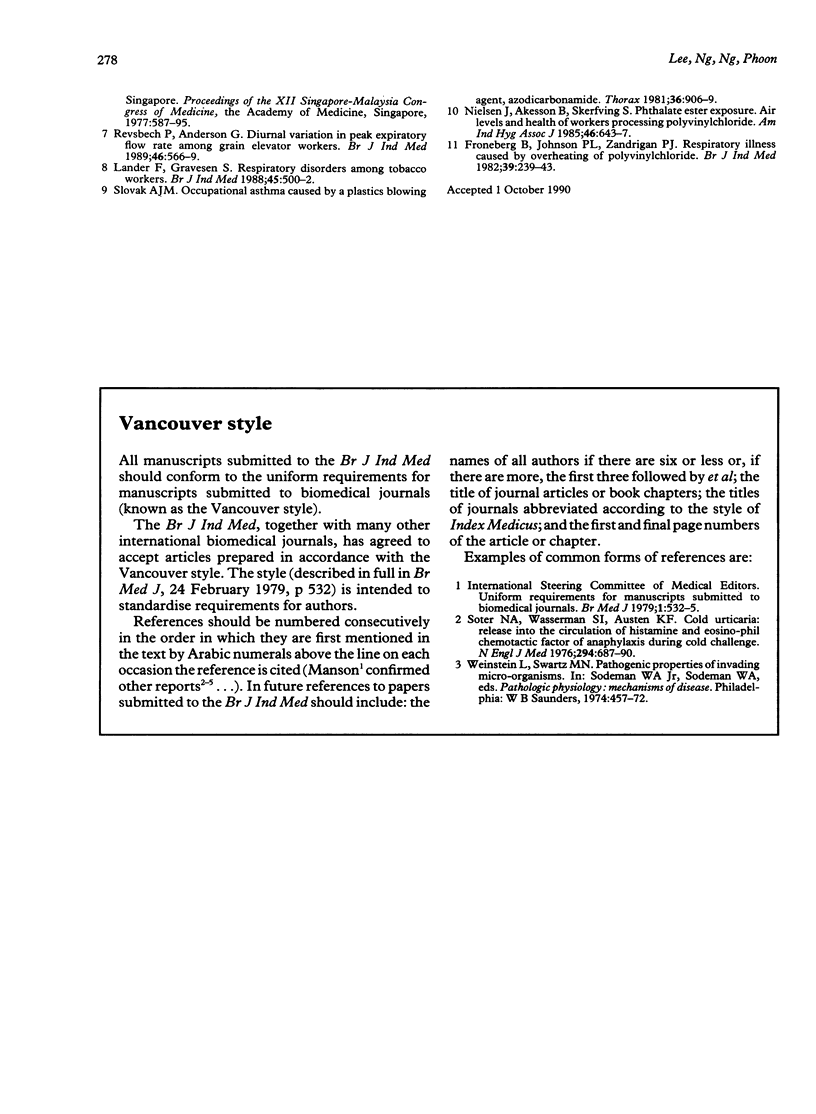Abstract
The diurnal variation in peak expiratory flow rate (PEFR) was studied in 24 mixers and 24 non-mixers in three polyvinylchloride (PVC) compounding plants and 24 non-PVC controls from a marine police workshop. The three groups (all men) were matched for age, race, and smoking. The mean respirable dust concentration (essentially PVC dust) was 1.6 mg/m3 for mixers and 0.4 mg/m3 for nonmixers. The mean diurnal variation in PEFR of the mixers was 6.5%. This was significantly higher than the 4.8% for non-mixers and 4.3% for the non-PVC controls. Six mixers had a diurnal variation of more than 15% on at least one day compared with none among the other two groups. Twenty nine per cent of mixers complained of wheezing compared with 4% of non-mixers and none among non-PVC workers. These differences were significant. Forced expiratory volume in one second (FEV1) for the mixers was 10% below the predicted values whereas that of non-PVC workers was 2% below predicted values. The study indicates a significant acute airway constriction from occupational exposure to PVC dust.
Full text
PDF



Selected References
These references are in PubMed. This may not be the complete list of references from this article.
- Baser M. E., Tockman M. S., Kennedy T. P. Pulmonary function and respiratory symptoms in polyvinylchloride fabrication workers. Am Rev Respir Dis. 1985 Feb;131(2):203–208. doi: 10.1164/arrd.1985.131.2.203. [DOI] [PubMed] [Google Scholar]
- Ernst P., De Guire L., Armstrong B., Thériault G. Obstructive and restrictive ventilatory impairment in polyvinylchloride fabrication workers. Am J Ind Med. 1988;14(3):273–279. doi: 10.1002/ajim.4700140305. [DOI] [PubMed] [Google Scholar]
- Froneberg B., Johnson P. L., Landrigan P. J. Respiratory illness caused by overheating of polyvinyl chloride. Br J Ind Med. 1982 Aug;39(3):239–243. doi: 10.1136/oem.39.3.239. [DOI] [PMC free article] [PubMed] [Google Scholar]
- Lander F., Gravesen S. Respiratory disorders among tobacco workers. Br J Ind Med. 1988 Jul;45(7):500–502. doi: 10.1136/oem.45.7.500. [DOI] [PMC free article] [PubMed] [Google Scholar]
- Lee H. S., Yap J., Wang Y. T., Lee C. S., Tan K. T., Poh S. C. Occupational asthma due to unheated polyvinylchloride resin dust. Br J Ind Med. 1989 Nov;46(11):820–822. doi: 10.1136/oem.46.11.820. [DOI] [PMC free article] [PubMed] [Google Scholar]
- Nielsen J., Akesson B., Skerfving S. Phthalate ester exposure--air levels and health of workers processing polyvinylchloride. Am Ind Hyg Assoc J. 1985 Nov;46(11):643–647. doi: 10.1080/15298668591395463. [DOI] [PubMed] [Google Scholar]
- Revsbech P., Andersen G. Diurnal variation in peak expiratory flow rate among grain elevator workers. Br J Ind Med. 1989 Aug;46(8):566–569. doi: 10.1136/oem.46.8.566. [DOI] [PMC free article] [PubMed] [Google Scholar]
- Slovak A. J. Occupational asthma caused by a plastics blowing agent, azodicarbonamide. Thorax. 1981 Dec;36(12):906–909. doi: 10.1136/thx.36.12.906. [DOI] [PMC free article] [PubMed] [Google Scholar]
- Soter N. A., Wasserman S. I., Austen K. F. Cold urticaria: release into the circulation of histamine and eosinophil chemotactic factor of anaphylaxis during cold challenge. N Engl J Med. 1976 Mar 25;294(13):687–690. doi: 10.1056/NEJM197603252941302. [DOI] [PubMed] [Google Scholar]
- Soutar C. A., Copland L. H., Thornley P. E., Hurley J. F., Ottery J., Adams W. G., Bennett B. Epidemiological study of respiratory disease in workers exposed to polyvinylchloride dust. Thorax. 1980 Sep;35(9):644–652. doi: 10.1136/thx.35.9.644. [DOI] [PMC free article] [PubMed] [Google Scholar]
- Soutar C. A., Gauld S. Clinical studies of workers exposed to polyvinylchloride dust. Thorax. 1983 Nov;38(11):834–839. doi: 10.1136/thx.38.11.834. [DOI] [PMC free article] [PubMed] [Google Scholar]


